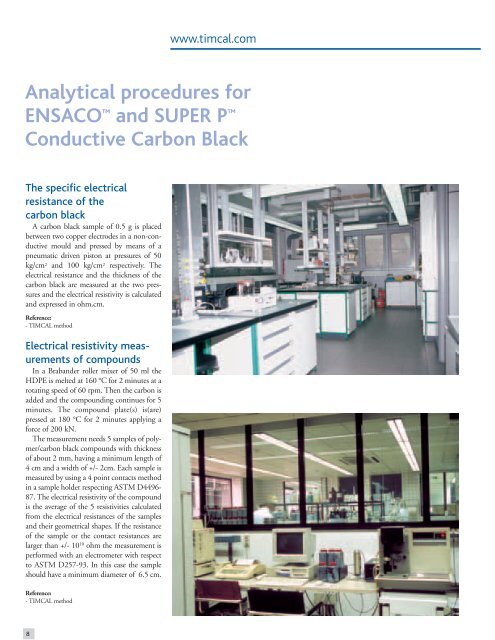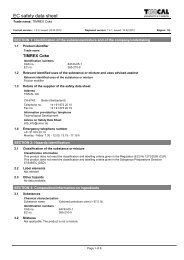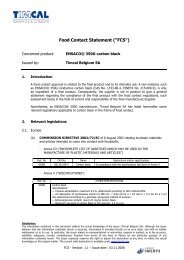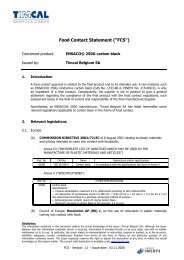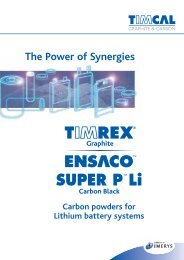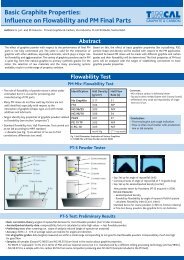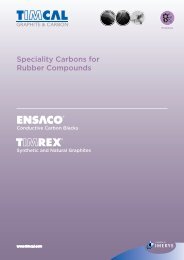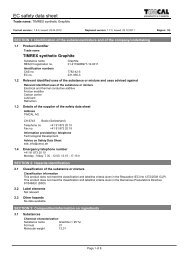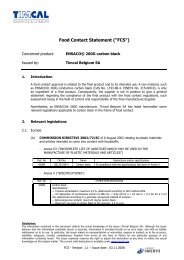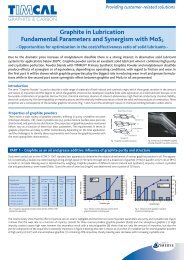Brochure: A Synopsis of Analytical Procedures - Timcal
Brochure: A Synopsis of Analytical Procedures - Timcal
Brochure: A Synopsis of Analytical Procedures - Timcal
Create successful ePaper yourself
Turn your PDF publications into a flip-book with our unique Google optimized e-Paper software.
www.timcal.com<strong>Analytical</strong> procedures forENSACO and SUPER P Conductive Carbon BlackThe specific electricalresistance <strong>of</strong> thecarbon blackA carbon black sample <strong>of</strong> 0.5 g is placedbetween two copper electrodes in a non-conductivemould and pressed by means <strong>of</strong> apneumatic driven piston at pressures <strong>of</strong> 50kg/cm 2 and 100 kg/cm 2 respectively. Theelectrical resistance and the thickness <strong>of</strong> thecarbon black are measured at the two pressuresand the electrical resistivity is calculatedand expressed in ohm.cm.Reference:- TIMCAL methodElectrical resistivity measurements<strong>of</strong> compoundsIn a Brabander roller mixer <strong>of</strong> 50 ml theHDPE is melted at 160 °C for 2 minutes at arotating speed <strong>of</strong> 60 rpm. Then the carbon isadded and the compounding continues for 5minutes. The compound plate(s) is(are)pressed at 180 °C for 2 minutes applying aforce <strong>of</strong> 200 kN.The measurement needs 5 samples <strong>of</strong> polymer/carbonblack compounds with thickness<strong>of</strong> about 2 mm, having a minimum length <strong>of</strong>4 cm and a width <strong>of</strong> +/- 2cm. Each sample ismeasured by using a 4 point contacts methodin a sample holder respecting ASTM D4496-87. The electrical resistivity <strong>of</strong> the compoundis the average <strong>of</strong> the 5 resistivities calculatedfrom the electrical resistances <strong>of</strong> the samplesand their geometrical shapes. If the resistance<strong>of</strong> the sample or the contact resistances arelarger than +/- 10 10 ohm the measurement isperformed with an electrometer with respectto ASTM D257-93. In this case the sampleshould have a minimum diameter <strong>of</strong> 6.5 cm.Reference:- TIMCAL method8


